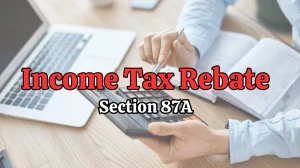
How to Avoid Self-Employment Tax? What is Self-Employment Tax?
To avoid or reduce self-employment tax, consider strategies such as forming an S Corporation, deducting half of your FICA taxes from federal income taxes, leveraging business expense deductions, deducting health insurance costs, and deferring income to prevent entering higher tax brackets.
by Kowsalya
Published Aug 07, 2023 | Updated Dec 18, 2023 | 📖 6 min read
How to Avoid Self-Employment Tax?
Self-employed individuals often face the challenge of managing self-employment taxes, which can be a substantial financial burden. Unlike traditional employees who split their payroll taxes with their employers, self-employed individuals are responsible for paying the full 15.3% self-employment tax, which includes Social Security and Medicare contributions. This outlines strategies for avoiding or reducing self-employment tax:
Form an S Corporation
Self-employment tax applies to "earned income" or money received as a salary or wage. By forming an S corporation, you can receive business income in the form of dividends rather than salary.
This way, clients or customers pay the corporation directly, and you withdraw a portion of the income as a salary while distributing the rest as dividends. The portion received as dividends is exempt from self-employment taxes.
Subtract Half of Your FICA Taxes From Federal Income Taxes
Self-employed individuals can deduct half of their self-employment taxes from their federally taxable income. For example, if you owe $7,650 in self-employment tax (15.3% of your salary), you can deduct $3,825 (half of $7,650) from your federally taxable income. This reduces the amount of income subject to federal income tax, lowering your overall tax burden.
Deduct Valid Business Expenses
The IRS allows self-employed individuals to deduct "ordinary and necessary" business expenses. This includes expenses directly related to generating income, such as office space, supplies, advertising, business travel, and even a portion of your mortgage and utilities if you have a home office. By deducting these expenses, you can reduce your taxable income and, consequently, your self-employment tax liability.
Deduct Health Insurance Costs
Self-employed individuals can deduct 100% of health insurance premiums paid for themselves and their qualifying dependents. This deduction is available if you had a net profit for the year. Deducting health insurance costs lowers your taxable income and reduces your overall tax liability.
Defer Income to Avoid Higher Tax Brackets
Self-employed individuals have the option to defer income, choosing when to receive payments. By delaying income to the next tax year, you can potentially reduce your tax liability, especially if it prevents you from entering a higher tax bracket.
What is Self-Employment Tax?
Self-employment tax, often referred to as SE tax, is a mandatory tax that self-employed individuals and small business owners must pay to fund Social Security and Medicare. This tax is designed to replace the payments that traditional employees and their employers make under the Federal Insurance Contributions Act (FICA).
It becomes applicable when an individual has net earnings of $400 or more from self-employment in a tax year or $108.28 or more from a tax-exempt church. It is reported and computed using IRS Form 1040 Schedule SE. Those who earn less than these thresholds from self-employment are exempt from paying this tax.
Explore the world of Taxes and more on MarketsHost. Get expert advice and insights to make informed decisions.
How to Minimize Self-Employment Taxes?
Self-employment taxes can be a significant financial burden for freelancers, independent contractors, and small business owners. These taxes fund Social Security and Medicare, and they can amount to more than regular income taxes in some cases. To minimize self-employment taxes, consider these simple steps:
Understand Self-Employment Tax
Self-employment (SE) tax is the equivalent of what regular employees and their employers pay for Social Security and Medicare. Self-employed individuals are responsible for both halves of this tax, amounting to 15.3% of their earnings. Understanding how SE tax works is crucial to minimizing it.
Claim Business Deductions
One of the most effective ways to reduce SE taxes is by claiming all allowable business deductions. Deductible expenses may include office supplies, advertising costs, home office expenses, and expenses related to the use of a vehicle for business purposes. Maximizing these deductions can reduce your taxable net income, thereby lowering SE tax liability.
Contribute to Retirement Accounts
Self-employed individuals can reduce their taxable income and SE tax liability by making contributions to retirement accounts like traditional IRAs, SEP-IRAs, and 401(k) plans. These contributions are tax-deductible and help you save for retirement while lowering your current tax bill.
Consider Health Savings Accounts (HSAs)
If you're covered by a high-deductible health insurance plan, you can contribute to a Health Savings Account (HSA). HSA contributions are tax-deductible, and the money can be withdrawn tax-free for qualified medical expenses. This reduces your taxable income and SE tax liability.
Explore Business Structure Options
Changing your business structure can also help minimize SE taxes. Sole proprietors and partners typically have all their business income subject to SE tax. However, by incorporating your business as a C corporation, S corporation, LLC, or limited partnership, you can avoid paying SE taxes on some of your business income. Business entities are taxed separately, and dividends paid to owners are not subject to SE tax.
Review Income Thresholds
Keep an eye on income thresholds that affect SE taxes. For example, there's a cap on Social Security tax, which increases annually. In 2023, the cap is set at $160,200. Additionally, the Affordable Care Act imposes an extra 0.9% Medicare tax on incomes over $200,000 for single filers or $250,000 for joint filers. Be aware of these thresholds and plan accordingly.
Seek Professional Advice
Consult with a financial advisor or tax professional to get personalized guidance on minimizing your self-employment taxes. They can help you identify deductions, contributions, and strategies that are most beneficial for your specific financial situation.
How Does the Self-Employment Tax Work?
The self-employment tax is a financial obligation for individuals who are self-employed or small business owners. It serves as a substitute for the traditional payroll taxes paid by employees and employers under the Federal Insurance Contributions Act (FICA). This tax is necessary to fund critical social welfare programs like Medicare and Social Security, ensuring that self-employed individuals can qualify for Social Security benefits upon retirement.
The self-employment tax rate is currently set at 15.3%, comprising two parts: 12.4% for Social Security and 2.9% for Medicare. Social Security tax applies only to a specific income threshold, while there is no income cap for Medicare tax.
The IRS treats self-employed individuals as both employers and employees, making them responsible for paying both portions of these taxes. However, the good news is that self-employment tax is tax-deductible. Self-employed individuals can claim a deduction on the employer's portion when calculating their income tax.
How to Avoid Self Employment Tax - FAQ
1. Who pays self-employment tax?
Self-employed individuals, including freelancers, contractors, and sole proprietors, pay self-employment tax.
2. How is self-employment tax calculated?
The self-employment tax rate is 15.3% of net earnings, comprising 12.4% for Social Security and 2.9% for Medicare.
3. Are there income limits for self-employment tax?
The Social Security portion of self-employment tax is applied only to the first $160,200 of income for 2023.
4. What is the self-employment tax penalty rate?
Currently 2023, the self-employment tax penalty is 0.5% of the unpaid tax for each month or partial month the tax is not paid.
5. Can self-employed individuals claim deductions to minimize self-employment taxes?
Yes, self-employed individuals can claim various deductions, such as home office expenses, health insurance premiums, and retirement contributions, to reduce their self-employment tax liability.




